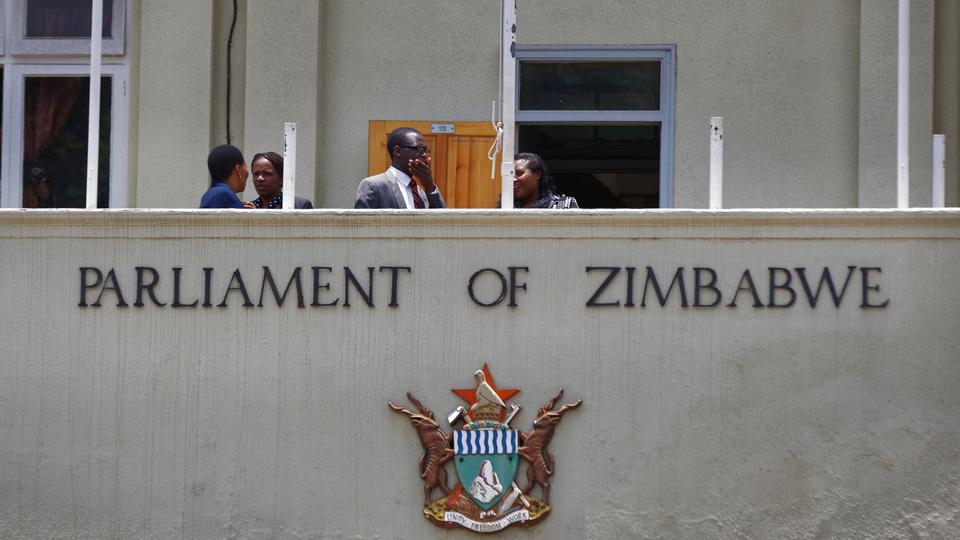
DZIMBANHETE Arts and Culture Interactions has been on the southern outskirts of Harare since its inception in 2008.
Yet even if staying away from the madding crowd in Zimbabwe’s capital is the centre’s founding mantra, its impact is felt in the city and beyond.
It was announced in March 2021 that sculptor Terrence Musekiwa would be one of Zimbabwe’s four representatives at the 59th edition of the Venice Biennale in 2022, making him the sixth artist mentored at Dzimbanhete to make it to one of the most esteemed events in the world’s cultural calendar.
Others who have passed through the institution and been to Venice are painters Portia Zvavahera, Gareth Nyandoro and Virginia Chihota, artist and teacher Masimba Hwati, and artist Kudzanai-Violet Hwami.
Educator and printmaker Chikonzero Chazunguza founded Dzimbanhete, but it’s not a one-man show. Key to the place and project is Jonathan Dube, a traditional healer popularly known by his clan name of Samaita.
As Dzimbanhete’s resident mystic, he invests the space with spiritual gravitas, consults with patients and supplicants, and is its chief theorist of African metaphysics.
Its current location in a sandveld landscape overgrown with elephant grass, shrubs and indigenous trees, and dotted with balancing granite rocks, is 20km south of Harare.
The new site, dominated by a recently constructed, squarish brick and mortar structure, is a short distance from its old, a suburban house on what used to be a commercial farm.
- Chamisa under fire over US$120K donation
- Mavhunga puts DeMbare into Chibuku quarterfinals
- Pension funds bet on Cabora Bassa oilfields
- Councils defy govt fire tender directive
Keep Reading
Chazunguza and Dube, far removed from the talkative city, where you can’t hear yourself for the noise, have had space to think about and experiment with what an African gallery (or a gallery in Africa) in a formerly colonised country should look like.
A protest in pedagogy
Chazunguza’s background and training influence his approach to pedagogy. He won a scholarship in 1987 to study at the Institute of Pictorial Arts in Sofia, Bulgaria, where he graduated with a masters in fine arts in 1994.
He went back to Zimbabwe to teach printmaking, painting and design at the Harare Polytechnic College.
Immediately, he could see there was something wrong with the curriculum and the oppressive stranglehold of European art history.
“One thing I started having a quiet protest about was the teaching of art history. Art history, not just here but everywhere, is European art history … We started changing the curriculum, our argument being that it’s not proper that an African country teaches European art history. Let’s teach history with an aesthetic which comes from Africa. Some colleagues started bringing African elements,” he said in an interview at Dzimbanhete in July 2021.
After Harare Polytechnic, Chazunguza taught at the University of Zimbabwe, the Chinhoyi University of Technology and then the privately-run Zimbabwe Institute of Vigital Arts (Ziva), a school founded and run by educator and graphic designer Saki Mafundikwa.
At government-run institutions, there was only so much change one could push through in a country that, with the late Afro-Victorian dictator Robert Mugabe as an uber schoolmaster, prided itself as the most British in Africa.
Perhaps realising it was impossible to change the curriculum, he wanted his “students [to] understand their position in European art history”, but soon grew weary of even these attempts.
“I reached a point where I got tired of teaching at institutions and I left and I thought of creating a centre,” Chazunguza said.
Dzimbanhete draws its name from its main focus: printmaking. It translates roughly to “tender print”.
Some of his former students at Harare Polytechnic — Zvavahera, Nyandoro, Chihota, and the late artist and teacher Munyaradzi Mazarire — gravitated towards the centre.
Here they debated and chatted into the small hours about some of art history’s most pressing concerns “until it was general talk”.
Showing a bias for his discipline, Chazunguza uses techniques from printmaking as teaching aids.
“When I am mentoring, I use printmaking as a blueprint because it has steps. It gives you logical discipline. That’s important. Forward planning. Layering until something is created. Patience. Printmaking has elements in it which make an artist maintain discipline,” Chazunguza explained in the assured tones of someone who has thought about something for a long time.
Spirit and song as a mission
Many historians writing about Zimbabwe forget the “vital dimension of the African spirit”, Zimbabwean poet Musa Zimunya told Banning Eyre for his biography Lion Songs: Thomas Mapfumo and the Music That Made Zimbabwe (2015).
“When people are under stress, colonial stress, as labourers on the farms, in the domestic industry, or as peasants suffering the brunt of oppression and forced resettlement — at every turn, Africans had recourse to one artistic medium. That is music. That is song … It is a glaring gap in the history of this country that no one has sought to establish the role of music in the lives of common people.”
If historians haven’t bothered to put music at the centre of the lives of Zimbabweans, Chazunguza and Dube have taken the omission as their mission.
Every so often, Dube hosts nights in which the living commune with the ancestor-dead at a ceremony known as bira (that the word bira rhymes with mbira, seems to be derived from it, shows the centrality of the instrument to Shona spirituality).
These nights guided by the moon and its phases are filled with the sound of the mbira, beer and dance.
The climax of the rituals is usually reached when, with a sudden shriek, exuberant intakes of breath and the customary request for water — proof that the distance travelled and the chasm crossed are vast — a spirit leaps over for a brief date with mortals.
The centrality of the mbira at Dzimbanhete came after Chazunguza and Dube deliberated on which art form to explore in their own practices.
“The mbira has an ancient narrative and hasn’t changed for about 1 000 years. The songs are the same, there might be variations here and there, but the mbira has remained consistent,” said Chazunguza.
“So we brought the mbira into the vicinity to see what the artists would get from working close to mbira musicians and the kind of works they would make.”
He was reiterating a point he made in another interview in February 2018, when he said: “The story is absent not just in visual arts, but in those who are writing, even in music itself and design. And the story is in the mbira instrument. In the music and instrument there are [stories] that have been there for ages. So, we decided to draw the mbira close to our practice.”
The pull of the mbira
In The Soul of Mbira: Music and Traditions of the Shona People of Zimbabwe (1993), a fascinating study by American ethnomusicologist Paul Berliner, he insists on calling the instrument by the name mbira and not as “finger piano”, “thumb piano” or “hand piano”, as some are wont to call it in the West.
In its diverse forms, the instrument can be found in Ethiopia in the east, Niger in the west, and much of south, southeast and central Africa.
For Chazunguza, the pull of the mbira is also in the fact that the founding myths of the Shona are gestured at in the music. The migrations of the Bantu from the north, for instance, are referenced in one elemental mbira tune called Nhemamusasa, the song thought to be the first laid down when the Shona settled from Guruuswa, the mythical land of tall grass: “Ngati temeyi musasa tigare panapa,” Chazunguza explained. “Let’s cut down trees and build a shelter.”
The Shona, comprising the groups Zezuru, Karanga, Korekore and Manyika, are said to have settled in the country now known as Zimbabwe between the 10th and 12th centuries.
Chazunguza also said that Shona temporality can be deduced from the names of what are now mbira standards. Shona history is divided into nine epochs, he said. At the beginning is nhemamusasa. Other eras are mahororo, chakwi, bvunzai Chaminuka, bangiza, nyabango, taireva, garaurimo through to chipindura.
Some of these ages, including nhemamusasa, mahororo, taireva and bangiza, are the names of mbira standards. (Note that some of these standards are the names of the instruments themselves, tuned in such a way that a song, say Nhemamusasa, can be played optimally on a nhemamusasa mbira type).
Chazunguza’s use of the instrument and its sound as markers of time and the history of the Shona is fascinating.
It’s what Zimunya attempted to do in trying to explain the seemingly eternal horror of Mugabe’s reign: “The problem with mbira music is that it’s very difficult to break the cycle and the melody sequence,” he told Eyre.
Zimunya was probably referring to how mbira tunes seem to play on forever, partly because, to ears not used to the music, the standards seem to blend seamlessly into each other, travelling in manifold directions at once — to an ancient past, a related song, but also to the morning, when the bira party ends.
“Sometimes I think this must have something to do with African history and the fate of African communities. You go round and round until you swoon. Robert [Mugabe] can’t break that cycle. That’s why we are not going anywhere,” said Zimunya.
Even when the Mugabe era is over, look at the circus and nightmare presided over by his successor Emmerson Mnangagwa.
As Chazunguza and Dube researched the instrument’s origins, they learnt that the first mbira keys were made of a hard wood, suggesting a provenance predating the Iron Age. (Berliner writes in his book that before steel and scrap metal came to be used in making keys, they were made by Shona blacksmiths from “iron smelted from mined ore”.)
Chazunguza found the pre-Iron Age mbira fascinating and commissioned Ambrose Shikisha, a craftsman and mbira player, to make a prototype of the mbira consisting just of wood, including the keys.
The instrument Shikisha made was included in a 2016 exhibition, the 7 Ancient Voices of Mbira, held not long afterwards at Dzimbanhete.
In Zimbabwe, according to Berliner, there are five types of mbiras: matepe, karimba, mbira dzevadzimu, njari and mbira dzavaNdau.
Dzimbanhete’s interest in the instrument is not purely academic. There are not many institutions in Zimbabwe that engage actively with the theory and practice of the instrument like the centre does. At its old venue, it had built a stage to create an amphitheatre of sorts.
On this platform, called the Matombo Stage, mbira musicians regularly performed, in Chazunguza’s words, “in the hope that these interactions would change the direction of the centre’s visual practice” but also to entertain scores of patrons who came to listen to the music.
Dzimbanhete hosted 30 mbira groups in September 2014 — outmatching their previous efforts — who played for 36 hours straight in a concert called Mbira Sunsplash (a term borrowed from Jamaica’s Reggae Sunsplash music festivals).
A wide cultural lens
Yet Dzimbanhete is not only song and dance, neither is it just about the Shona. When you look at a particular culture intently, as Dube and Chazunguza have done, sometimes its centrifugal forces drive you to seek out other cultures. Chazunguza was one of the three artists, with Hwati and Nyandoro, who represented Zimbabwe at the Venice Biennale in 2015.
In Venice, he saw that spatial segregation occurs. Countries from the developed world occupy the prime pavilions, where launches and other talks happen, while those from the Global South are on the periphery.
“I wondered, are we in the ghetto and these guys are in the suburb? Of course, it doesn’t mean the art there is lesser, but these are the main members.”
When he returned to Zimbabwe, he had the idea of building what he calls an all-African village. His thinking was that if Dzimbanhete were to bring an artist to the centre from Nigeria, it wouldn’t house them in a tent.
So, working with people from the surrounding communities, it is developing a theme park in traditional African architectural styles.
Structures belonging to the Zezuru, the Ndebele, the Doma, a marginalised group found mostly in northern Zimbabwe, the Tonga, the riverain people found on both sides of the Zambezi, the Kavhango of Namibia, the Igbo of Nigeria, the Tswana and the Khoisan were complete by mid-2021.
The idea is to have all of Africa’s 54 countries represented on the grounds and, one day, stage a festival of all indigenous people in the world.
As South African universities and other cultural institutions try to shake off the vestiges of colonialism, the example set by Dzimbanhete is worth considering. — New Frame











